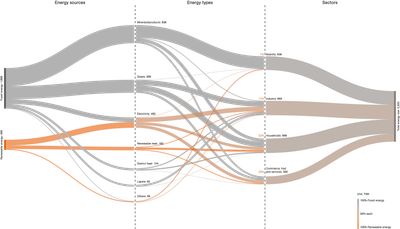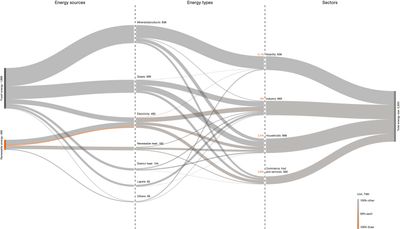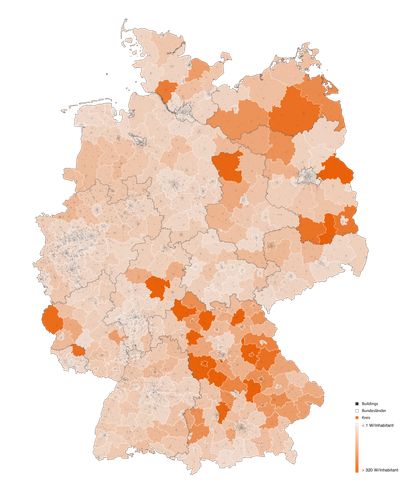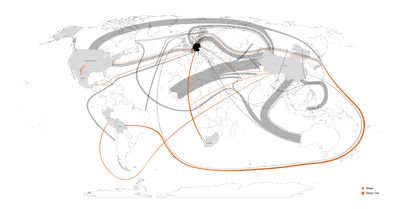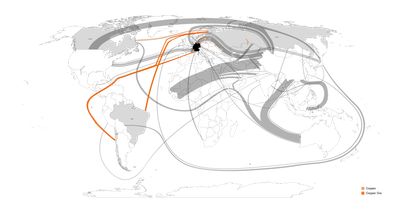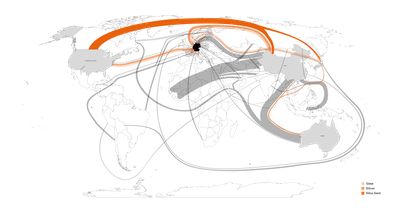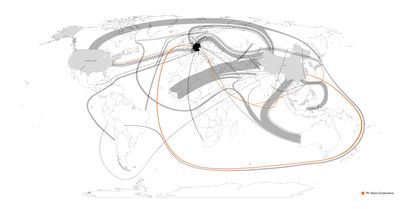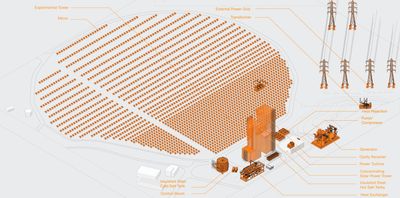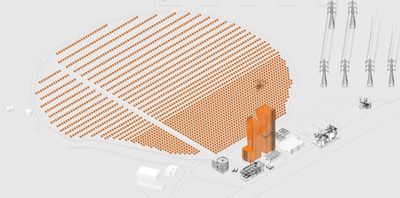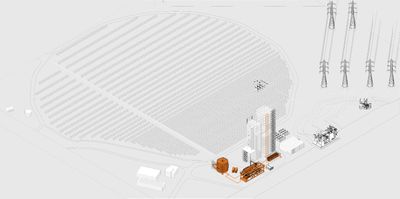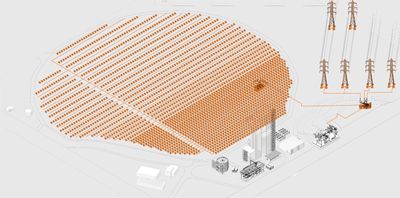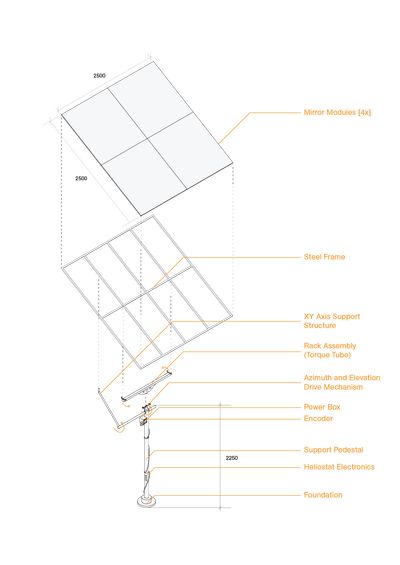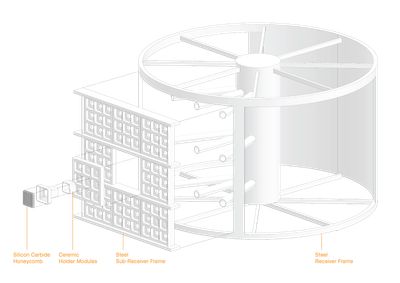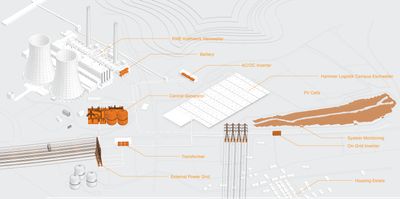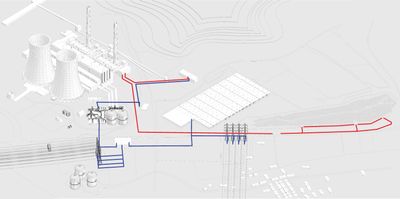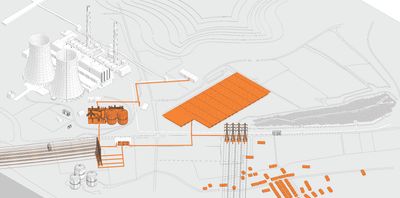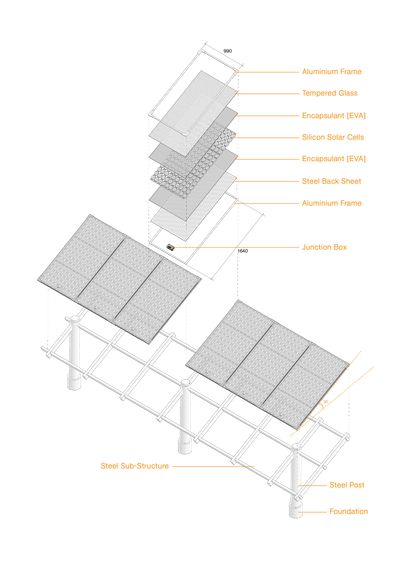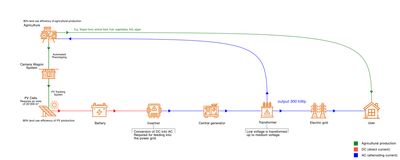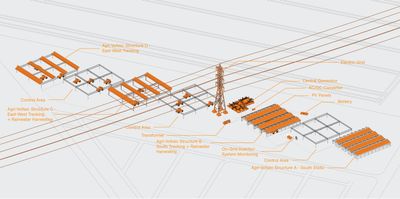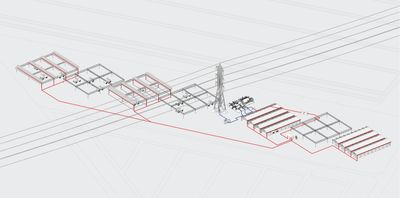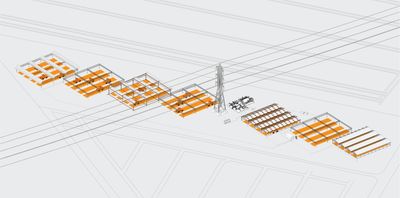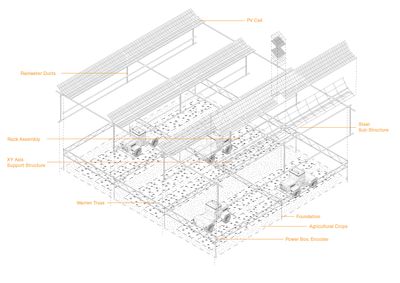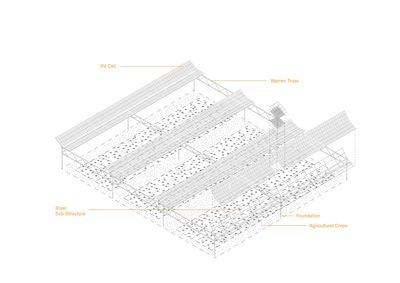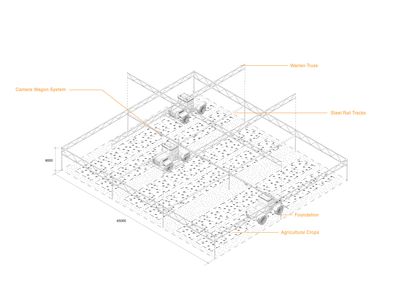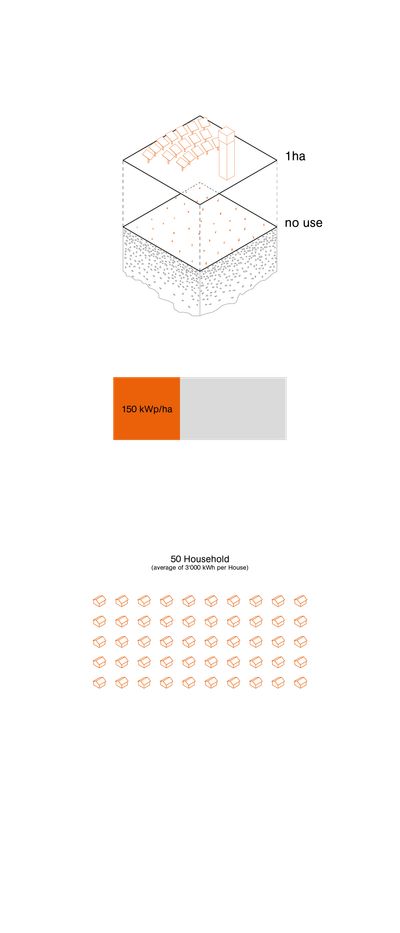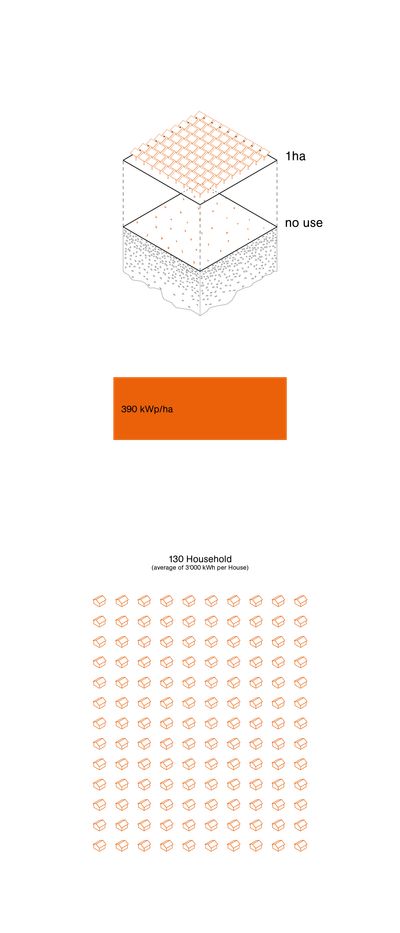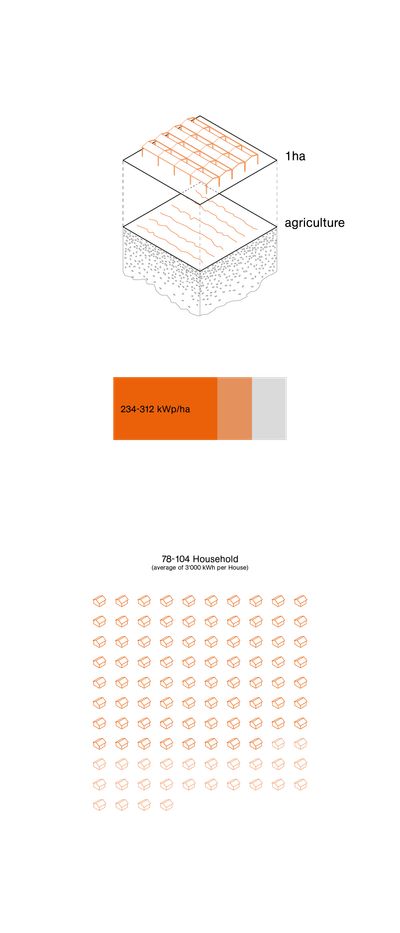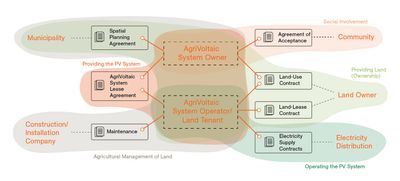AtlasSolarBastien Terrettaz, Eu Juin Toh, and Esad Mujanovic
Solar power for electrical energy has been promoted by the state since the 1980 Energiewende in Germany. But the complexity of stakeholders involved in the construction of solar energy production sites as well as the existing land use legislations complicate the quick expansion. Moving between scales, we aim to identify different forms of solar energy production, their effectiveness and its repercussions (both tangible and intangible), among them solar photovoltaics, a hybrid technology which might provide alternatives scenarios for the future of German territories.
Germany: A Leader In Solar Energy?
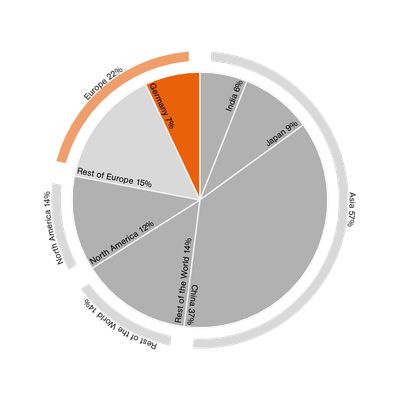
Source: International Renewable Energy Agency (IRENA), 2022

Source: Statistisches Bundesamt (Destatis), 2022
The promotion of renewable energy began in Germany in the 1990s and was firmly anchored in 2000 with the Erneuerbare-Energien-Gesetz (EEG). An instrument was conceived that is constantly being developed further. The aim is to increase the share of renewable energies in the electricity supply to at least 80 % by 2050 and to manage the phase-out of nuclear energy. Germany is therefore one of the first countries to feed energy from PV plants directly into the electricity grid, as it also aims to reduce dependence on international oil and gas imports.
To date, Germany spends around 45 billion euros annually on imports of coal, oil and natural gas. In addition, the expansion of renewable energies will create an average of 440,000 jobs between 2022 and 2035. Future electricity consumption will also increase due to current developments such as e-mobility and heat pumps, which will soon account for a large share of electricity consumption.
Germany has seen great potential in solar energy, which is economically as well as politically lucrative. Solar energy accounts for a remarkable 9 % of electricity generation in Germany and sets a high bar in international comparison.
Although Germany is one of the top countries in the international comparison with 9 % of electricity production from photovoltaics, this diagram clearly shows how small the share of solar power is compared to the total energy consumption in Germany. Mineral oil products currently account for the largest share due to mobility. In the future, however, the automotive industry will increasingly focus on e-cars and with time also completely abandon the combustion engine. This change will depend heavily on the power supply and its reliability.
Solar plants consume space that is usually not available in urban areas and costs too much money. For this reason, solar parks are mainly placed in rural areas, close to consumers or large cities. The area between Berlin and Hamburg is a hotspot for large-scale solar energy production as well as in the south around Nuremberg and Munich. In the cities, PV systems are mainly found on the roofs of buildings. However, these only account for a fraction of the energy generated by the solar parks.
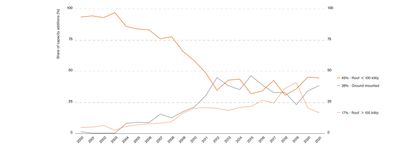
The fluctuations in ground-mounted and roof PVs is heavily informed by the amendments to the German Renewable Energy Sources Act, EEG.
Source: Fraunhofer ISE, 2022 / MaStR, 2022
Germany’s installed photovoltaic capacity, its average power output, produced electricity, and its share in the overall consumed electricity, showed an exponential growth for more than two decades up to about 2012. The government has created policies that enabled small-scale projects to feed back into the national electricity grid.
Beginning from 2000, the introduction of the Feed-in Tariffs (FIT) scheme by the new German Renewable Energy Sources Act, EEG sparked the rapid uptaking of renewable energies like PV. However, at this point, it does not mean that the goal of democratising electrical energy is achieved, as solar energy is still used as a way for big corporations of sustainable energy producers to exacerbate the existing economic and social inequalities. Since 2012, growth has slowed down significantly due to major tariff cuts in PVs and Free-standing photovoltaic systems on nature conservation areas were excluded from remuneration.
The overall trend also shows a self-informed economic feedback by the government as it struggles with funding the increasing difference between generators of renewable energy and the retail price of electricity rates as well as balancing social equality. In the process of the achieving climatic agendas, the limitations of the government is thus shown.
Solar Energy and the Energiewende 1980
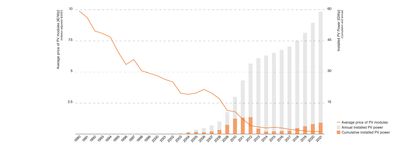
Source: Bundesministerium für Wirtschaft und Klimaschutz, 2022 / Fraunhofer ISE, 2022
Even prior to the 1990s, the core ideology of Energiewende has already been present with the “pan-European upsurge of protests against glaring inequalities and injustices of industrial capitalism during and after the 1968s” (The Subversion of Politics, Katsiaficas, 1997). The subsequent resistance to nuclear power also gave rise to the Autonomen which “developed forms of self-managed consensus rather than relying on powerful individuals or hierarchical organisations” (People’s Power, Dawson, 2020). The dynamics of German politics in energy questions was one that sprung up from the grassroots. Renewable energy like that of solar was a crucial yet extremely precarious medium of the Energiewende because of the fluctuations in costs ramifications of PV industries moving parallel with changes in political power and societal influences.






Is PV Really Renewable?
Through the study of dynamic flow of materials, energy and processes, we observe that most of the materials used for the production of PV systems are not available locally. This leads us to the question of whether PV systems are really renewable or not. If we look at the potential energy that could theoretically be produced with PV systems, it is remarkable to see that 80 % of the potential is lost as energy loss. The 20 % that could be generated therefore only account for 9 % of the electricity demand in Germany. 10 % of this must be deducted to cover the grey energy in order to do justice to the resources used. Silicon for example requires up to 1500 megajoules per kilogram which is an immense amount of energy going mainly for extraction, production and transport.
Speaking of energy loss, there is still a bleak of hope when we observe the technological improvements of PV cells over the years (and the years to come). National Renewable Energy Laboratory (NREL) reveals that although most solar PV arrays currently use vary in efficiency from around 10–20 %, efficiency values as high as 44.4 % have been obtained in experimental settings by Sharp and NREL. Despite most of the high efficiency technologies running under high laboratory supervision and not at full-scale production, all 5 research-cell technologies have efficiency levels that are rising at exponential rates. However, it is critical to note that the majority of efficiencies higher than 25 % belong to large private corporations like Sharp, Boeing and Panasonic. This is heavily attributed to huge financial resources and short-term incentives of maximising profits.

Source: International Energy Agency (IEA), 2022
GREY ENERGY AND CARBON FOOTPRINT OF SOLAR ENERGY

Source: Wirtgen Group
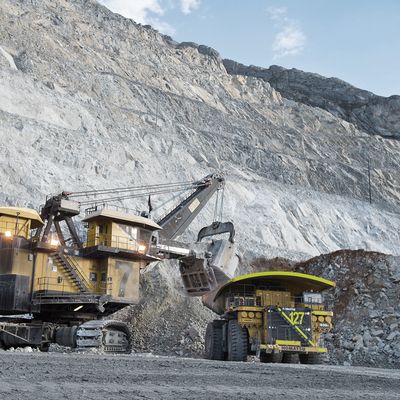
Source: desde adentro

Source: Codelco

Source: Martin Marietta
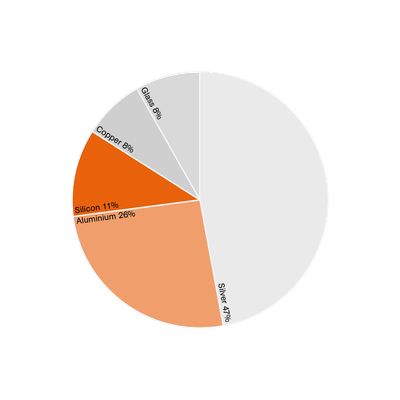

Intensive technological expertise is required to develop a PV semiconductor for the production of these sustainable solutions. As a result, the sourcing of the materials, often mined and excavated from territories in the global south (who do not have the technical capacity to develop PV). Hence, the shipment to Asian countries (where there are the relevant machineries) are prevalent. They are subsequently developed and shipped to Germany. This process is takes aeons and one should start to reflect on the Carbon Footprint it has on the climate as a result of this global shipments.
It is also important to note the changes of apparent and real carbon footprint of each PV panel raw material after considering their respective grey energy factor.
Can the efficiency of solar cells really outweigh the ecological detriments from material production for technological solutions in the long run?
Solar Energy Production in the Rheinische Revier: 3 Case Studies
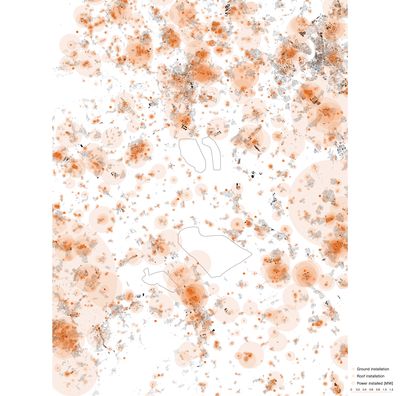
Source: WMS Erneuerbare Energien NRW, 2022

Ground Installations tend to be large solar plants but are geographically less dense than that roof installed PV panels. Moreover, ground installations produce more energy per household compared to roof installations.
Source: WMS Erneuerbare Energien NRW, 2022
Jülich Solar Tower
Looking into an unconventional way of harnessing solar energy, Jülich Solar Tower is the first and only German solar power plant utilizing concentrated solar power (CSP), a solar power technology that does not use photovoltaics.
The sun’s rays are collected via heliostats distributed over an area of 100 ha and concentrated in the receiver tower. In the process, energy is generated with the help of heat. The Jülich Solar Tower began producing electricity in 2008 and is still used today for experimental and demonstration purposes.
A main field of research at SIJ is the optimisation of absorber structures to achieve the highest possible efficiency and minimise energy loss. In the second tower, however, experiments such as synthesis gas (syngas) on an industrial scale are also being researched and developed.
Solarpark Inden
Solarpark Inden is a photovoltaic park with a calculated maximum output of 3.9 MW in the Watt Peak model and was the largest solar power plant in North Rhine-Westphalia as of December 2011. 16,236 solar modules (99×164 cm) were set up on an area of 10 ha, each aligned at an angle of 30 degrees to the south. Within six months, 9.84 million euros were installed here, 57.67 % of which was borne by Rurenergie GmbH (belonging to the district of Düren ) and 42.33 % by the company F&S solar concept from Euskirchen.
SUNfarming Morschenich-Alt
Sunfarming is an Agri-Horti-Photovoltaic research system which includes PV trackers and integrated rainwater harvesting. The system consists of five different structures, by varying orientation and mobility, while a under heavy surveillance of automatic phenotyping. Plowing, sowing and harvesting is performed together with local farmers.
The most tangible parameter determining the effectiveness of solar photovoltaics is the amount of land use. Comparing between the three infrastructures, Jülich Solar Tower is the least efficient in generating electricity. Solarpark on the other hand is efficient but does harness the potential of the land. Sunfarming is relatively efficient and allows hybrid land use.
The Potentials and Challenges of Agrivoltaics
Increasingly frequent heat waves in Central Europe have caused the annual irradiation in Germany to increase drastically overtime. This makes it the more favourable for the use of Agrivoltaics as they could not only produce more electrical energy through greater amounts of solar energy absorbed, but also improve crop cultivation by reducing evaporation and protection against intense solar radiation.
While the technical and economic feasibility of Agri-Voltaics has been proven in many countries, the current regulatory framework is probably the greatest hurdle to exploiting its potential. In Germany, for example, the dual use of land for photovoltaics and agriculture is currently not defined in law and the Renewable Energy Sources Act (EEG) does not provide adequate compensation. Is it that regulations should not be so precise at ‘controlling’ machines, but rather consider the typological value as a whole?
The Complexity of Land Use Rights

Source: Gesetze im Internet, 2022
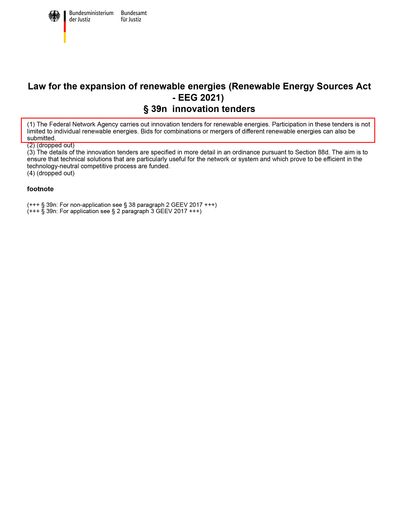
Source: Gesetze im Internet, 2022
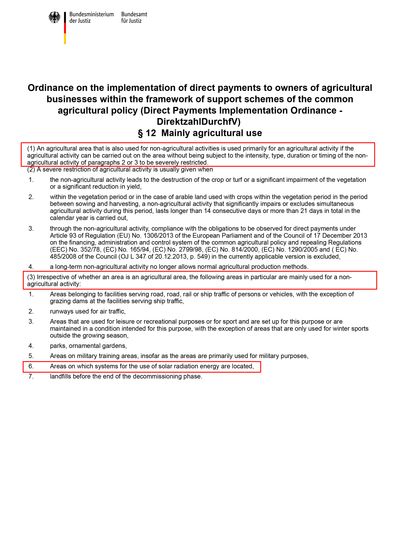
Source: Gesetze im Internet, 2022
